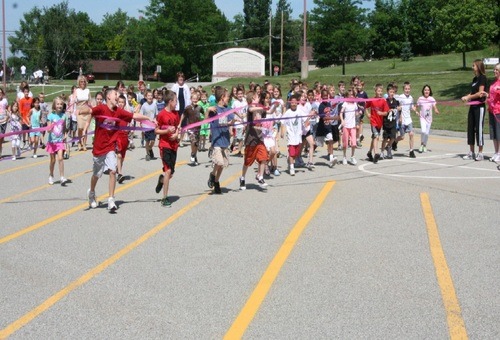Written by Shellie Pfohl, Executive Director, President’s Council on Fitness, Sports & Nutrition
As the buzzer sounds on another sizzling summer, kids across America are getting back in the game and gearing up for another school year. Now, instead of days filled with swimming, biking, climbing trees and playing, most kids will spend six to seven hours each day within school walls.
The primary focus of schools is to help students learn and develop foundational skills and knowledge to succeed in life. But with the increasing demands and pressures of improving standardized test scores and grade point averages are we defeating these goals by eliminating or significantly restricting the time students are physically active throughout the school day?
When it comes to the school environment, the latest research shows that increased physical activity and improved academic outcomes don’t have to be an either-or-proposition. In fact, physical activity and academic success go hand and hand – a true win-win for all.
Physical activity not only helps kids stay healthy, it can also lead to higher test scores, improved attendance, better behavior in class and lower rates of childhood obesity. According to the Centers for Disease Control and Prevention (CDC), school-aged youth should participate in at least 60 minutes of physical activity every day to reap these benefits.
That’s why the President’s Council is proud to serve as the federal lead for Let’s Move! Active Schools – a comprehensive school-based physical activity program that will help make physical activity the new norm for schools. Let’s Move! Active Schools encourages schools to develop a culture in which physical activity and physical education are foundational to academic success.
Powered by a national collaboration of leading health and education organizations, Let’s Move! Active Schools streamlines the selection of programs, resources, professional development and funding opportunities, and delivers a customized action plan – making it simple for teachers and administrators to implement.

Across the nation, we are starting to see positive changes take hold. Bower Hill Elementary School in Venetia, Pennsylvania is a powerful example. Recently, the school started a walking program that quickly grew into a marathon challenge, where teachers and their students attempted to walk a marathon over the course of the year, leading up to participation in the final mile at the Pittsburgh Kids Marathon.
To learn how you, too, can be a “game-changer” for your school, sign up to be a champion for Active Schools at www.letsmoveschools.org. For more information about the learning connection between regular physical activity and academic performance, visit http://www.cdc.gov/HealthyYouth/health_and_academics/.